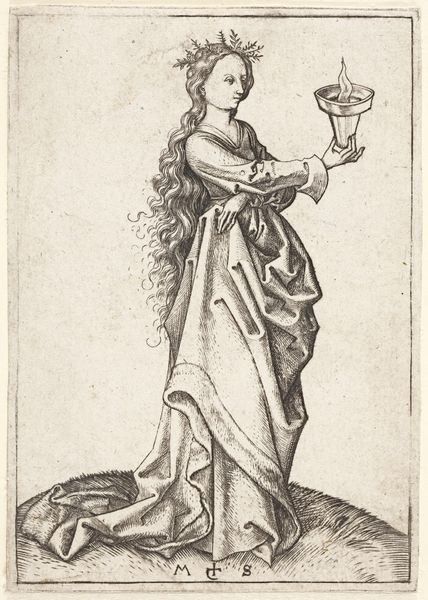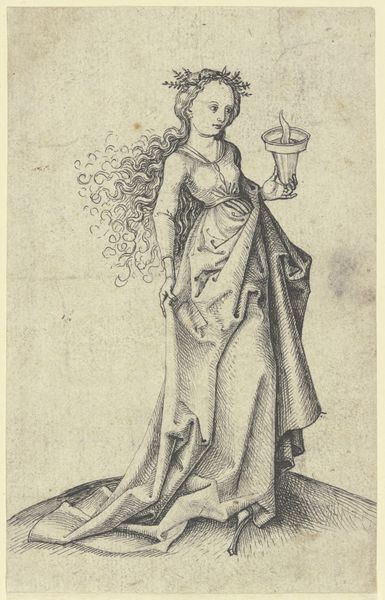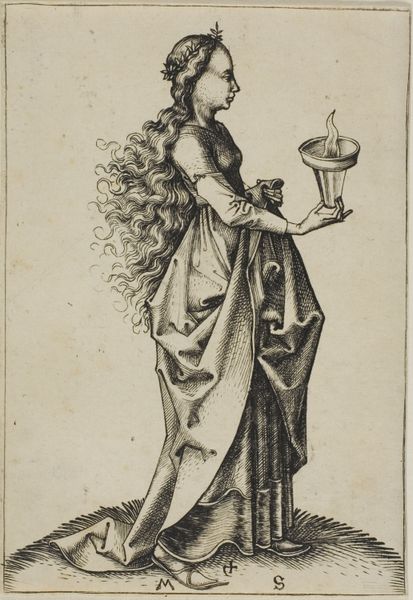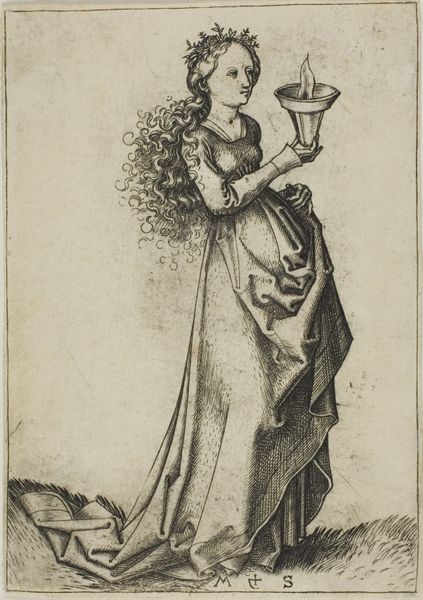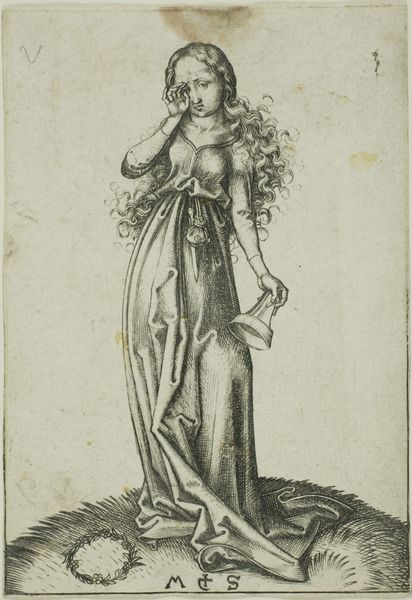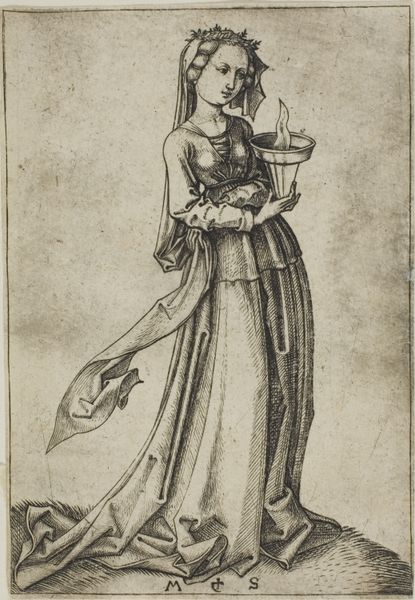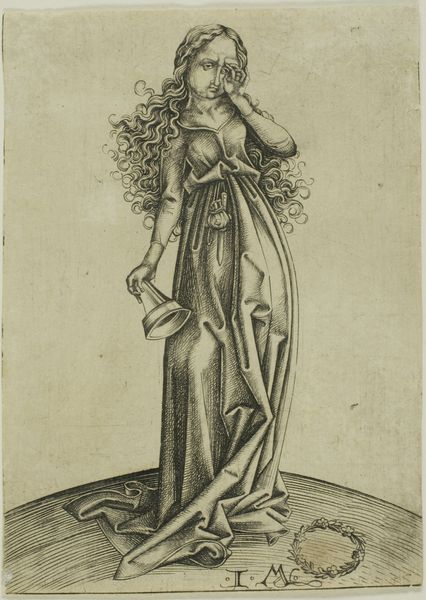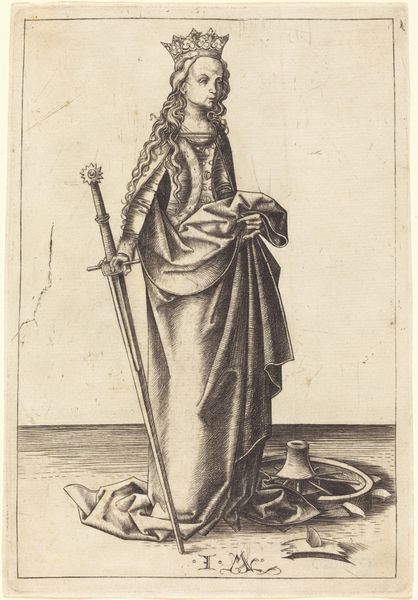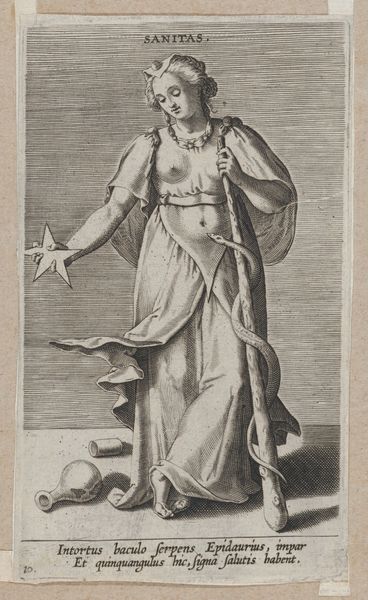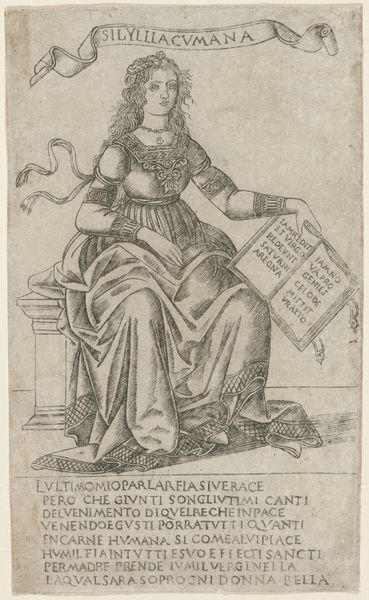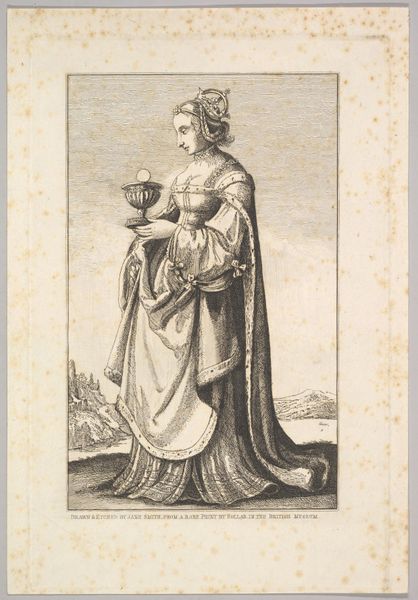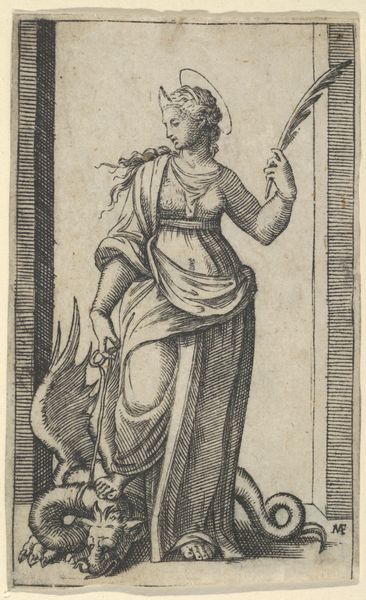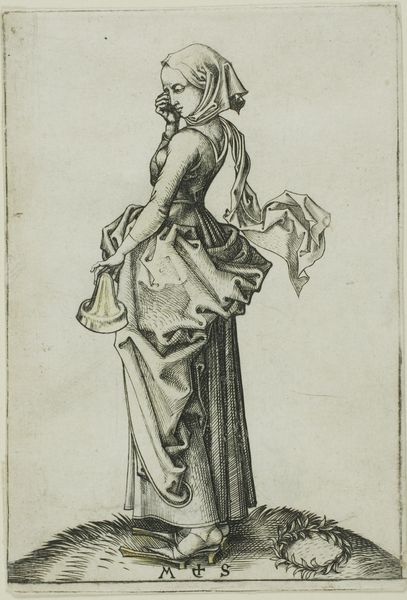
drawing, print, engraving
#
portrait
#
drawing
#
medieval
# print
#
figuration
#
history-painting
#
northern-renaissance
#
engraving
Dimensions: Sheet: 4 11/16 × 3 3/16 in. (11.9 × 8.1 cm)
Copyright: Public Domain
Curator: There’s a distinct solemnity to this print. The stillness in her face is so intriguing. Editor: That's an interesting read. Standing before Israhel van Meckenem's "The Third Wise Virgin" done between 1485 and 1503, in engraving, one is drawn to this figure that radiates both piety and vulnerability, something so inherently tied to representations of femininity and virtue of that time period. Curator: I agree. And the way she delicately holds the lamp, the flame itself becomes a symbol of faith, of unwavering belief. One wonders about the iconography of light and how this relates to salvation narratives from that time. The northern Renaissance was quite consumed by religious and moral messages, it’s very telling that she holds up a flame to guide us through darkness. Editor: Definitely! And think of the ten virgins from the Gospel of Matthew. Five were wise and five were foolish, distinguished only by preparedness, for having kept their lamps lit while awaiting the bridegroom's arrival. I'm captivated by the social and religious constructs dictating these expectations. What happens when the metaphorical flame flickers for women? Are they seen as the foolish ones? What social pressures kept that "flame" ablaze? Curator: Well, the unwavering gaze, her regal yet restrained pose - almost a study in conflicting expectations and roles isn’t it? I’m drawn to the details, such as the meticulous lines in her long, flowing hair—emphasizing youth and purity. Van Meckenem has chosen to express her not as an individual woman, but as an allegorical figure, which carries the moral of wisdom, of preparedness. It becomes an abstract role that stands as a didactic guide. Editor: Exactly. I can't help but reflect on how these symbols impacted actual women during that time. What anxieties arose? Was their identity confined solely to their 'readiness' as religious subjects and wives? Perhaps looking deeper into marriage contracts from that era would enlighten us about what the 'flame' represents as an object. Curator: Fascinating how a single image can ignite such intricate discourse surrounding expectations and identities! Editor: Right? These are reminders that artistic endeavors are inherently social and political commentaries. I find it equally compelling that "The Third Wise Virgin" keeps posing new, relevant inquiries to new generations.
Comments
No comments
Be the first to comment and join the conversation on the ultimate creative platform.
